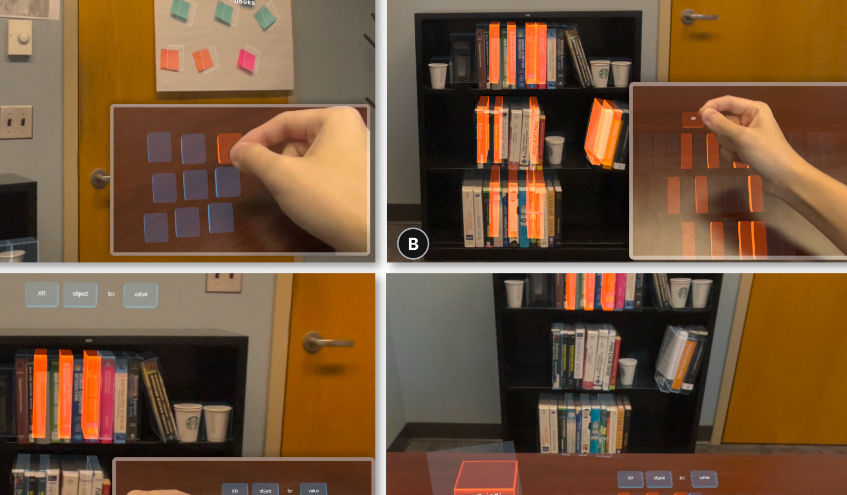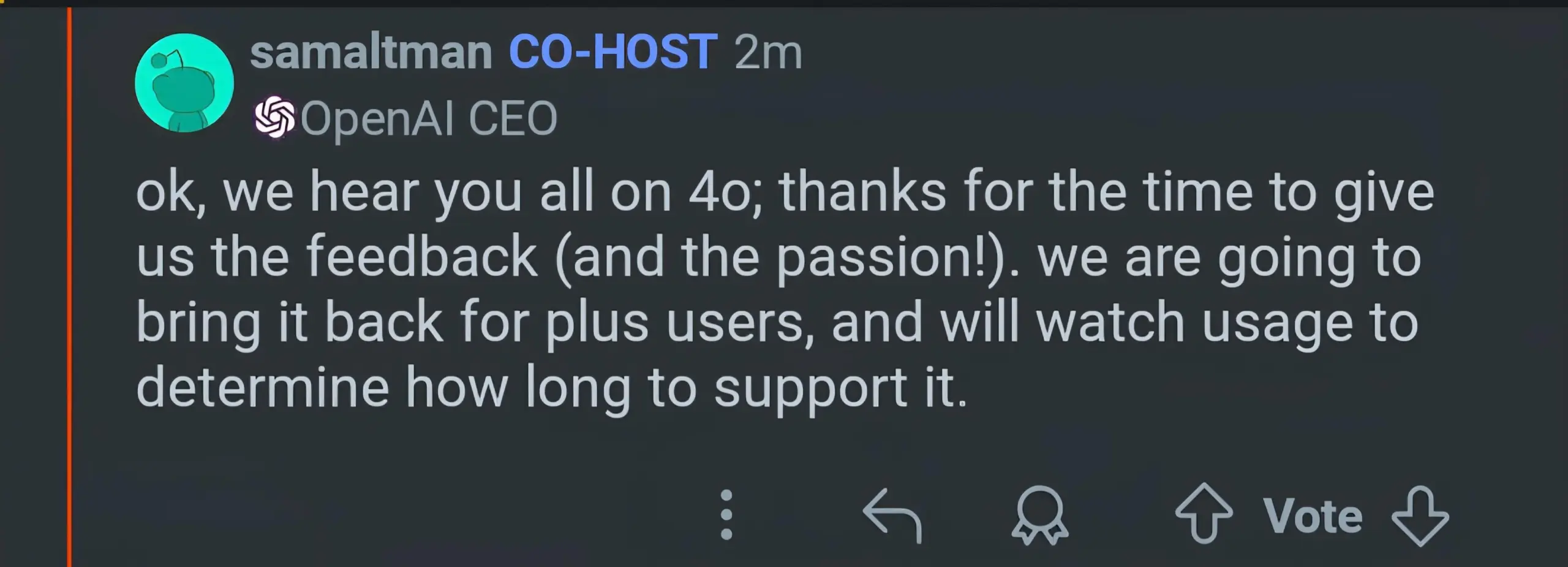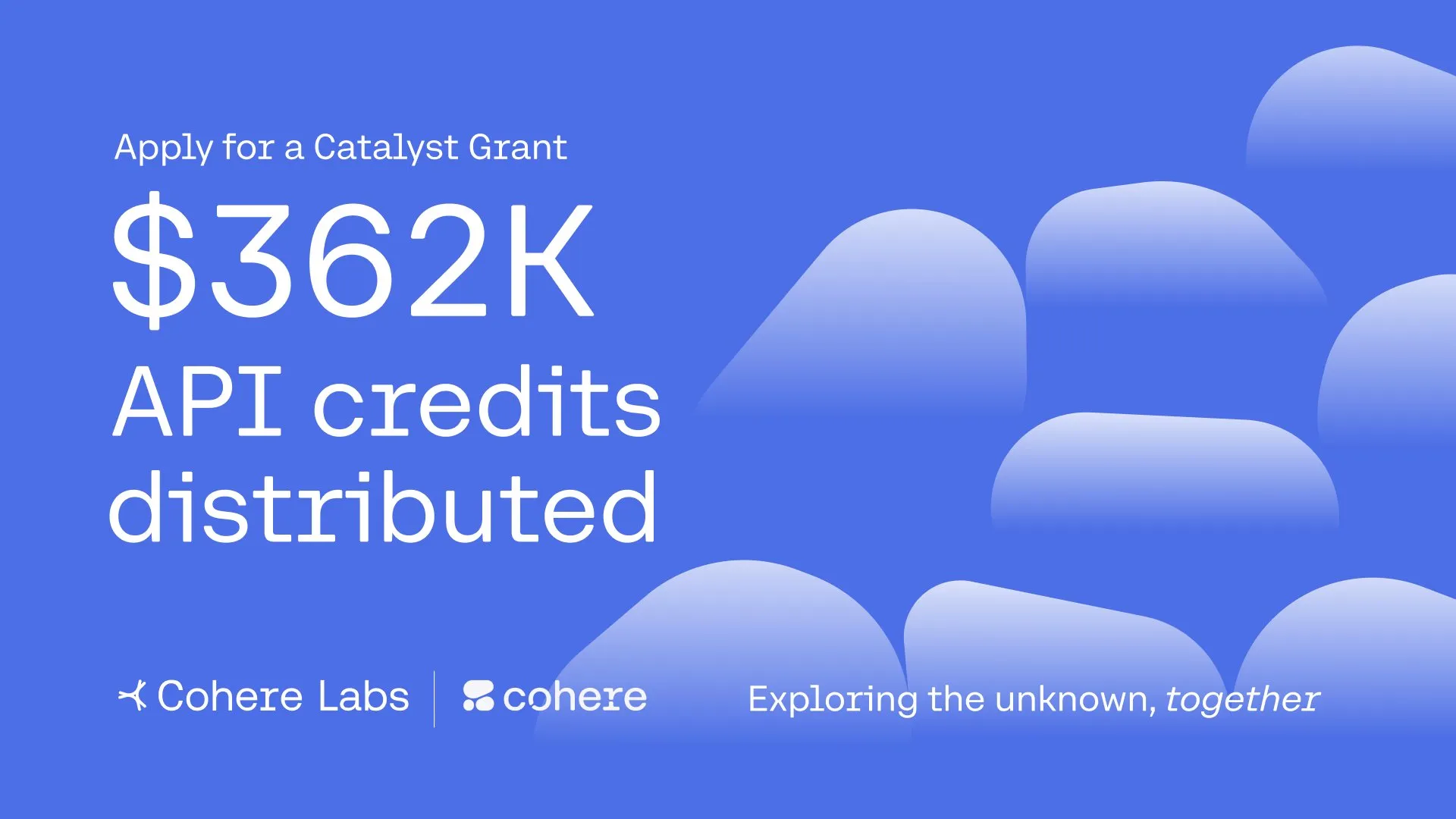Kata Kunci:Konferensi Robot Dunia, Robot Humanoid, Kecerdasan Berwujud, GPT-5, Kacamata AI, Google DeepMind, LangChain, Kacamata AI Reality Proxy, Simulator Dunia Genie 3, Indeks Vektor LEANN, Panggilan Gratis Qwen Code, Layanan Prioritas GPT-5
🔥 Spotlight
“Embodied AI’s ‘Spring Festival Gala’: 200 Robots Compete on One Stage”: The World Robot Conference (WRC 2025) was grandly held in Beijing, attracting over 220 enterprises and showcasing more than 1500 exhibits, including over 100 debut products from 50 humanoid robot companies. The conference demonstrated the latest advancements of humanoid robots in various fields such as home services (e.g., making beds, folding clothes), commercial services (e.g., cashiering, coffee making, bartending), industrial applications (e.g., precision assembly, sorting, handling), and medical care (e.g., rehabilitation training, massage). Furthermore, significant innovations were also displayed in components across the robotics industry chain (e.g., planetary roller screws, dexterous hands, tactile sensors), signaling that embodied AI is rapidly integrating into the physical world, poised to drive deep fusion between AI and real-world scenarios. (Source: 36氪)
AI Glasses for “Telekinetic Object Manipulation”: Reality Proxy: A team of Zhejiang University alumni has developed an AI glasses technology called “Reality Proxy,” which enables users to “telekinetically manipulate” and intuitively interact with real-world objects through “digital surrogates.” This technology can capture scene structures and generate actionable digital proxies, supporting diverse interaction functions such as browsing previews, multi-object brushing, filtering by attributes, semantic grouping, and spatial zoom grouping. This innovation merges the physical and digital worlds, significantly enhancing the interaction efficiency and precision of XR devices in complex scenarios like book retrieval, architectural navigation, and drone control, and is considered a crucial step towards a “Jarvis”-like AI assistant. (Source: 量子位)

🎯 Trends
OpenAI GPT-5 Release and Subsequent Adjustments: OpenAI officially released GPT-5, emphasizing its “routing system” which dynamically allocates model resources based on task complexity and user intent, achieving “seamless multimodal collaboration” and significantly reducing factual error rates and hallucinations. However, after the release, users reported a “dumbing down” phenomenon. Sam Altman explained this as a malfunction of the automatic switcher and promised a fix. He also stated that GPT-4o would be restored as an option for Plus users, and plans to increase GPT-5’s “temperature” and personalization options to address user preferences for the model’s “personality.” (Source: 36氪, The Verge, The Verge, sama, openai, nickaturley, sama, openai, dotey, dotey, Reddit r/ChatGPT, Reddit r/ChatGPT, Reddit r/artificial, Reddit r/ChatGPT)

Google DeepMind Latest Progress Summary: Google DeepMind recently released a series of AI achievements, including the state-of-the-art world simulator Genie 3, Gemini 2.5 Pro Deep Think opened to Ultra subscribers, free Gemini Pro for university students with a $1 billion investment to support US education, the release of the global geospatial model AlphaEarth, and the Aeneas model for deciphering ancient texts. Additionally, Gemini reached gold medal level in the IMO (International Mathematical Olympiad), launched Storybook, a storybook app with art and audio, added Kaggle game arena LLM benchmarks, the asynchronous coding Agent Jules exited Beta, AI search mode went live in the UK, and a NotebookLM video overview was released, with Gemma model downloads surpassing 200 million. (Source: demishassabis, Google, Ar_Douillard, _rockt, quocleix)
GLM-4.5 Series Models Soon to Be Open-Sourced: Zhipu AI (GLM) announced that its new GLM-4.5 series models will soon be open-sourced, revealing that the model defeated 99% of real players in a map search competition within 16 hours. This move signals new progress in the field of visual models, potentially impacting geolocation and image recognition applications. The community has shown high interest in the new model’s specific capabilities and open-source details. (Source: Reddit r/LocalLLaMA)

Cohere Command A Vision Released: The Cohere team has launched Command A Vision, a state-of-the-art generative model designed to provide enterprises with excellent multimodal visual task performance while maintaining strong text processing capabilities. The release of this model will further enhance the efficiency and effectiveness of enterprise applications combining images and text. (Source: dl_weekly)
Meta V-JEPA 2 Released: Meta AI has released V-JEPA 2, a groundbreaking world model focused on visual understanding and prediction. This model is expected to bring significant advancements in robotics and artificial intelligence, as it helps AI systems better understand and predict visual environments, thereby enabling more complex autonomous behaviors. (Source: Ronald_vanLoon)
OpenAI GPT-5 Introduces Priority Processing Service: OpenAI has introduced “Priority Processing” for GPT-5, allowing developers to achieve faster first token generation speeds by setting "service_tier": "priority". This feature is crucial for applications sensitive to millisecond-level latency but requires additional payment, reflecting OpenAI’s exploration in optimizing model service experience and commercialization. (Source: jeffintime, OpenAIDevs, swyx, juberti)

🧰 Tools
Qwen Code Offers Free Call Quota: Alibaba’s Tongyi Qianwen announced that Qwen Code provides 2000 free calls daily, with international users getting 1000 calls via OpenRouter. This initiative significantly lowers the barrier for developers to use code generation tools, potentially promoting innovative applications based on Qwen Code and the popularization of “vibe coding,” making it a strong contender in the field of AI-assisted programming. (Source: huybery, jeremyphoward, op7418, Reddit r/LocalLLaMA)

Genie 3 Explores the World of Paintings: Google DeepMind’s Genie 3 demonstrates astonishing capabilities, allowing users to “step into” and explore their favorite paintings, transforming them into interactive 3D worlds. This feature brings new dimensions to art appreciation, education, and virtual experiences, for example, one can stroll through Edward Hopper’s Nighthawks or Jacques-Louis David’s The Death of Socrates, experiencing immersive art. (Source: cloneofsimo, jparkerholder, BorisMPower, francoisfleuret, shlomifruchter, _rockt, Vtrivedy10, rbhar90, fchollet, bookwormengr)

LangChain Launches GPT-5 Playground: LangChain has integrated OpenAI’s latest GPT-5 models (including gpt-5, gpt-5-mini, gpt-5-nano) into its LangSmith Playground, with built-in cost tracking. This provides developers with a convenient platform to test and build GPT-5-based applications while monitoring API usage costs, helping optimize development processes and resource management. (Source: LangChainAI, hwchase17)

Claude Code Facilitates Mobile Hotfixes: A developer successfully handled an urgent hotfix in a production environment using Claude Code via a mobile browser at a Taco Bell drive-thru. This demonstrates the powerful practicality of AI coding tools in mobile scenarios, freeing developers from desk constraints and enabling code debugging and problem-solving anytime, anywhere, thus enhancing work flexibility. (Source: Reddit r/ClaudeAI)

Clode Studio Remote Access Feature: Clode Studio has released an update, adding a built-in Relay Server and multi-tunnel support, allowing users to remotely access desktop IDEs and control Claude Code Chat from any device. This feature offers various tunnel options (Clode, Cloudflare, Custom), supports mobile and tablet touch control, and ensures secure authentication, aiming to enhance remote development experience and flexibility. (Source: Reddit r/ClaudeAI)
LEANN: Extremely Lightweight Vector Index: LEANN is an innovative, extremely lightweight vector index that enables fast, accurate, and 100% private RAG (Retrieval-Augmented Generation) on a MacBook, without an internet connection, with index files 97% smaller than traditional methods. It allows users to perform semantic searches on local devices, processing personal data like emails and chat logs, providing a personal Jarvis-like experience. (Source: matei_zaharia)

Qwen-Image LoRA Trainer Launched: The WaveSpeedAI platform has launched the Qwen-Image LoRA Trainer, the world’s first platform to offer an online Qwen-Image LoRA trainer. Users can now train their custom styles in minutes, greatly simplifying the AI art creation process and enhancing the personalization capabilities of image generation models. (Source: Alibaba_Qwen)

Jules Launches Interactive Plan: Google’s asynchronous coding Agent Jules has released the Interactive Plan feature, allowing Jules to read codebases, ask clarifying questions, and collaborate with users to refine development plans. This collaborative approach increases the likelihood of users clarifying their goals, ensuring consistency in human-AI collaboration for code generation and solution building, thereby improving code quality and reliability. (Source: julesagent)

Grok 4 PDF Processing Capability Upgrade: xAI announced a significant enhancement to Grok 4’s PDF processing capabilities, now able to seamlessly handle ultra-large PDF files of hundreds of pages and better understand PDF content through more acute recognition. This upgrade has been rolled out in Grok’s web and mobile applications, greatly improving user efficiency in processing and analyzing complex documents. (Source: xai, Yuhu_ai_, Yuhu_ai_, Yuhu_ai_)

📚 Learning
HuggingFace Launches AI Courses: HuggingFace has released 9 free elite-level AI courses, covering core topics such as LLMs, Agents, and AI systems. These courses aim to help developers and researchers master cutting-edge AI technologies, lower learning barriers, and promote the development of the open-source AI community. (Source: huggingface)

Attention Basin: Research on LLM Contextual Position Sensitivity: A study revealed the significant sensitivity of Large Language Models (LLMs) to the contextual position of input information, termed the “attention basin” phenomenon: models tend to allocate higher attention to information at the beginning and end of a sequence while neglecting the middle part. The study proposes the Attention-Driven Reranking (AttnRank) framework, which significantly improves the performance of 10 different LLMs on multi-hop QA and few-shot learning tasks by calibrating model attention preferences and re-ranking retrieved documents or few-shot examples. (Source: HuggingFace Daily Papers)

MLLMSeg: Lightweight Mask Decoder Enhances Referring Expression Segmentation: MLLMSeg is a novel framework designed to address the challenge of pixel-level dense prediction in Referring Expression Segmentation (RES) tasks for Multimodal Large Language Models (MLLMs). This framework fully leverages the inherent visual detail features in MLLM visual encoders and proposes detail-enhanced and semantically consistent feature fusion modules, combined with a lightweight mask decoder, achieving a better balance between performance and cost, surpassing existing SAM-based and SAM-free methods. (Source: HuggingFace Daily Papers)

Learning to Reason for Factuality: A study proposes a novel reward function aimed at addressing the high hallucination rate of Reasoning Large Language Models (R-LLMs) in long-form factual tasks. This reward function simultaneously considers factual accuracy, response detail level, and answer relevance. Through online reinforcement learning training, the model’s average hallucination rate was reduced by 23.1 percentage points across six factual benchmarks, and the answer detail level increased by 23%, without affecting overall response usefulness. (Source: HuggingFace Daily Papers)

LangChain to Host Hacking Hours: LangChain will host “LangChain Hacking Hours,” providing a focused co-working environment where developers can make tangible progress on LangChain or LangGraph projects, receive direct technical guidance from the team, and connect with other builders in the community. (Source: LangChainAI)

DSPy: Fidelity in RAG Pipelines: Social media discussions highlighted the advantages of the DSPy framework in maintaining fidelity within RAG (Retrieval-Augmented Generation) pipelines. With DSPy, developers can engineer systems to proactively output “I don’t know” when the context does not contain necessary information, thereby preventing model hallucinations and simplifying the complexity of prompt engineering by separating business objectives, models, processes, and training data. (Source: lateinteraction, lateinteraction, lateinteraction)

AI Evals Course Insights: Hamel Husain shared 14 highlights from his AI Evals course, particularly prominent ideas regarding retrieval (RAG). The course emphasized the importance of evaluation in AI system development and how to effectively utilize retrieval techniques to enhance model performance, especially when dealing with complex data and multi-source information. (Source: HamelHusain)

Anthropic Pledges to Advance AI Education: Anthropic has joined the “Pledge to America’s Youth” initiative, collaborating with over 100 organizations to advance AI education. They will work with educators, students, and communities nationwide to cultivate essential AI and cybersecurity skills for the next generation, preparing them to meet future technological challenges. (Source: AnthropicAI)

The Essence of Chain-of-Thought (CoT) Reasoning: Discussions are heated regarding whether CoT reasoning is a “mirage.” A study, analyzing from a data distribution perspective, questions CoT’s true understanding capabilities, pointing out that it might overfit benchmark tasks and be prone to hallucinations. Concurrently, some views suggest that CoT can still provide valuable information in complex cognitive tasks, and its “thought traces” remain credible under specific conditions. (Source: togelius, METR_Evals, rao2z, METR_Evals, METR_Evals)

How LLMs Predict the Next Word: A video shared on social media intuitively demonstrates how Large Language Models (LLMs) generate text by predicting the next word. This helps users understand the fundamental working principle of LLMs, which is to select the most probable next word via probability distribution, thereby constructing coherent and meaningful sequences. (Source: Reddit r/deeplearning)
Necessity of Independent Projections for Q, K, V in Transformer Models: The community discussed the reasons for independent projections of Query (Q), Key (K), and Value (V) in Transformer models. The discussion pointed out that directly binding Q and V to input embeddings would compromise the model’s expressive power and flexibility, as independent projections allow the model to query, match, and extract information in different semantic spaces, thereby capturing more complex dependencies and multi-head attention mechanisms. (Source: Reddit r/deeplearning)
Adaptive Classifiers: New Architecture for Few-Shot Learning: A study proposed the “Adaptive Classifiers” architecture, enabling text classifiers to learn from a small number of samples (5-10 per class), continuously adapt to new data without catastrophic forgetting, and dynamically add new categories without retraining. This solution combines prototype learning and elastic weight consolidation, achieving 90-100% accuracy in enterprise-level tasks with fast inference speed, addressing ML deployment challenges in data-scarce and rapidly changing scenarios. (Source: Reddit r/MachineLearning)

Dynamic Fine-Tuning (DFT) Enhances SFT: A study proposed “Dynamic Fine-Tuning (DFT),” which redefines SFT (Supervised Fine-Tuning) as reinforcement learning and introduces a single-line code modification to stabilize token updates, thereby improving SFT’s performance. DFT, in some cases, surpasses RL methods like PPO, DPO, and GRPO, offering a more efficient and stable new approach for model fine-tuning. (Source: TheTuringPost)

💼 Business
OpenAI GPT-5 Pricing Strategy Sparks Price War Speculation: OpenAI released GPT-5 with API pricing ($1.25/1M input, $10/1M output) significantly lower than its competitor Anthropic Claude Opus 4.1 ($15/1M input, $75/1M output). This move is seen as a “killer move” that could trigger a price war in the LLM market. The industry is watching whether this is a short-term market share shock or the beginning of a long-term decline in AI costs, and how it will affect AI tool development, business models, and AI accessibility. (Source: Reddit r/ArtificialInteligence)

GPU Resource Centralization and AI Industry Landscape: Comments indicate that the high concentration of GPU resources has led to “GPU-rich labs” dominating the general AI field, making it difficult for open models to compete. The article suggests that 2025 will be the year of Agents and the application layer, and enterprises should focus on building acceptable solutions on the smallest LLMs rather than spending heavily on training large models, reflecting a strategic shift in the AI industry from model training to application deployment. (Source: Reddit r/artificial)
Chaos in AI Company Equity Transactions: Social media revealed phenomena of “underlying predators” and “scammers” in AI lab equity transactions. These multi-layered SPV (Special Purpose Vehicle) brokers, who have no direct relation to the companies themselves, engage in fraudulent activities, warning investors and the public to be vigilant about the growing irrational exuberance and potential risks in the AI sector. (Source: saranormous)
🌟 Community
GPT-5 Release Sparks Strong User Reactions and Controversy: OpenAI’s release of GPT-5 has triggered widespread discussion within the community. Some users expressed disappointment with GPT-5’s performance (especially in programming and creative writing), believing it to be inferior to GPT-4o or Claude Code, even feeling a “regression.” They also voiced dissatisfaction with OpenAI’s “automatic switcher” feature, model transparency, and adjustments to Plus user access limits. Many users expressed nostalgia for GPT-4o’s “personality” and “emotions,” considering it not just a tool but a “friend” or “partner,” even launching petitions demanding OpenAI restore the 4o option. Sam Altman responded, stating that the company underestimated user preference for 4o’s “personality” and promised to restore 4o as an option for Plus users, while also improving GPT-5’s “temperature” and personalization features, and explained that initial poor model performance was due to technical glitches during the launch. (Source: maithra_raghu, teortaxesTex, teortaxesTex, teortaxesTex, SebastienBubeck, SebastienBubeck, shaneguML, OfirPress, cloneofsimo, TheZachMueller, scaling01, Smol_AI, natolambert, teortaxesTex, Vtrivedy10, tokenbender, ClementDelangue, TheZachMueller, TomLikesRobots, METR_Evals, Ronald_vanLoon, teortaxesTex, teortaxesTex, scaling01, scaling01, scaling01, scaling01, scaling01, scaling01, scaling01, scaling01, scaling01, scaling01, Teknium1, Teknium1, Teknium1, Teknium1
